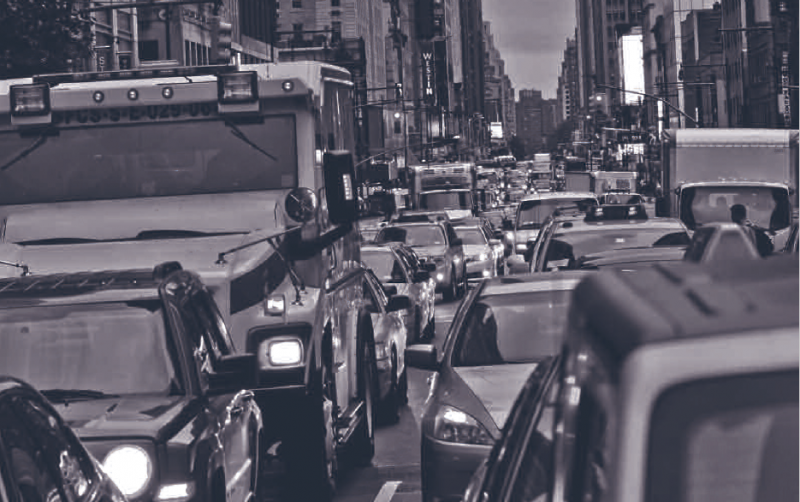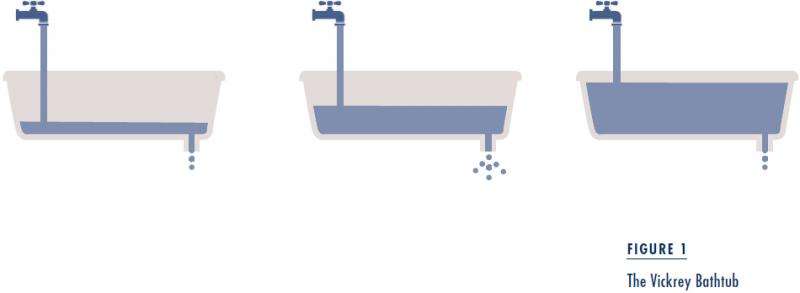Economist explains how traffic flows like water and how congestion tolls can help commuters

What do rush-hour traffic and a bathtub have in common?
In a study published in ACCESS Magazine, UC Riverside economist Richard Arnott applies the Vickrey Bathtub hypothesis to show that imposing fees during peak travel times can reduce traffic jams on downtown streets.
After watching traffic from his Manhattan office, William Vickrey, a Nobel Laureate in economics who is regarded as the father of congestion pricing, developed a theory that the dynamics of rush-hour traffic have the same properties as water flowing into and out of a hypothetical bathtub. The rate at which water drains from the bathtub increases with the height of the water until it reaches a certain height, at which point the outflow decreases.
"This critical height corresponds to the density of downtown traffic at which traffic jams start to become common," Arnott wrote in his paper, "A Bathtub Model of Downtown Traffic Congestion." "Above this level, traffic jams become more severe and the exit stream slows. A similar phenomenon occurs in electricity distribution networks. …. (O)verloading the system results in brownouts and eventually blackouts. In the context of downtown traffic congestion, overloading the system results in traffic jams and eventually gridlock."
Vickrey based his hypothesis on traffic flow theory and careful observation, since there were no data on the properties of traffic flow and density for an entire downtown area 25 years ago.
Arnott developed a model of the Vickrey Bathtub and applied it to show how congestion tolling can lower rush-hour travel costs by reducing the frequency and severity of traffic jams.

"In most large metropolitan areas, traffic jamming is severe," he wrote. "By reducing the incidence and severity of traffic jams, congestion tolling can improve the flow of downtown traffic during rush hours and decrease the costs of traffic congestion to such an extent that commuters are made better off even if they receive no benefits from the toll revenues collected."
Optimal tolling would still benefit commuters even if toll revenues "were completely squandered," he said. "The additional benefits from spending or redistributing toll revenue are icing on the cake."
ACCESS Magazine is published by the Regents of the University of California and reports on research funded by the University of California Transportation Center. Its goal is to present academic research in a way that is useful to policymakers and practitioners.
More information: "A Bathtub Model of Downtown Traffic Congestion." www.accessmagazine.org/article … -traffic-congestion/
Provided by University of California - Riverside




















